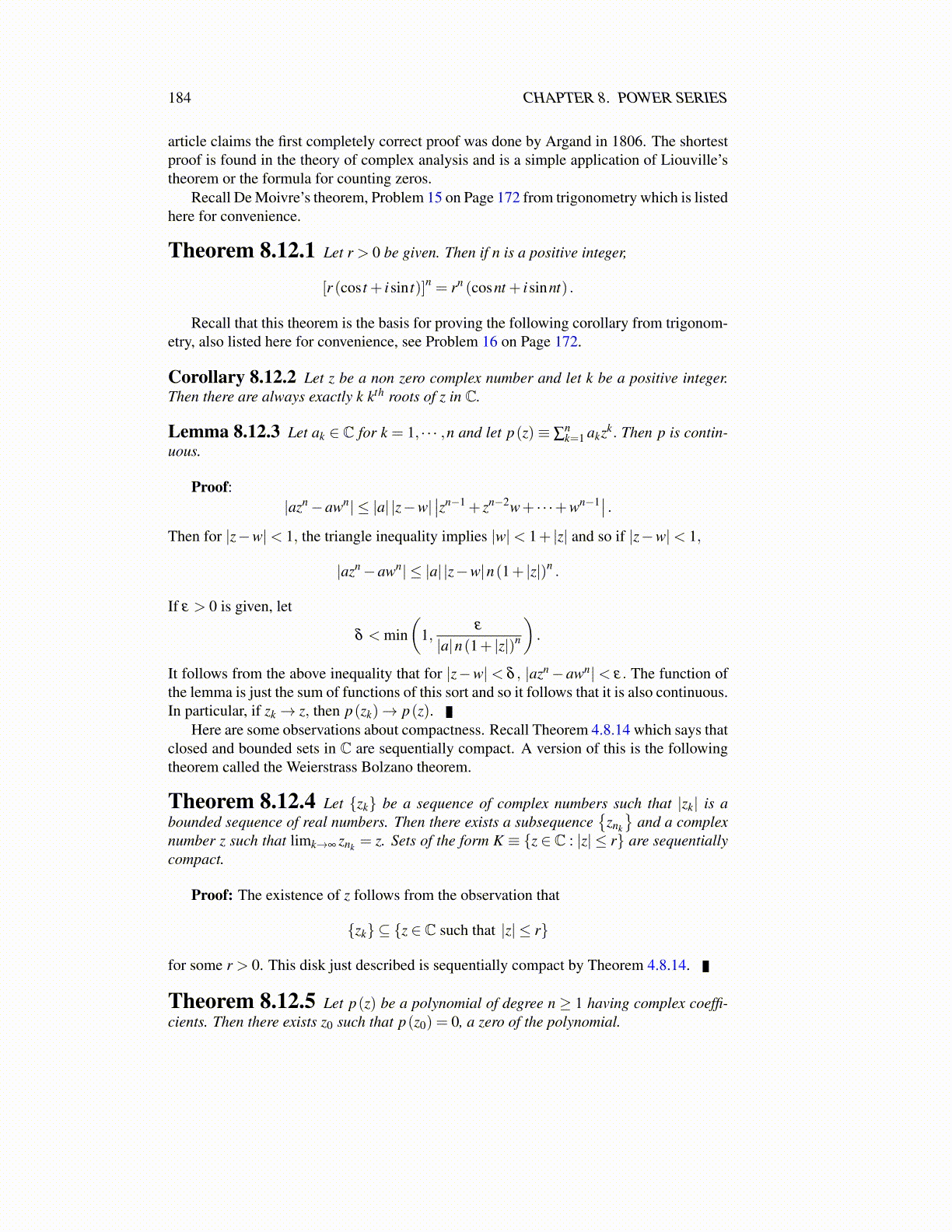
184 CHAPTER 8. POWER SERIES
Proof: It only remains to verify the last series converges absolutely. Letting pnk equal1 if k ≤ n and 0 if k > n. Then by Theorem 5.5.3 on Page 95
∞
∑n=0|cn| =
∞
∑n=0
∣∣∣∣∣ n
∑k=0
akbn−k
∣∣∣∣∣≤ ∞
∑n=0
n
∑k=0|ak| |bn−k|=
∞
∑n=0
∞
∑k=0
pnk |ak| |bn−k|
=∞
∑k=0
∞
∑n=0
pnk |ak| |bn−k|=∞
∑k=0
∞
∑n=k|ak| |bn−k|=
∞
∑k=0|ak|
∞
∑n=0|bn|< ∞.
The above theorem is about multiplying two series. What if you wanted to consider(∑∞
n=0 an)p where p is a positive integer maybe larger than 2? Is there a similar theorem to
the above?
Definition 8.13.2 Define ∑k1+···+kp=m ak1ak2 · · ·akp as follows. Consider all or-dered lists of nonnegative integers k1, · · · ,kp which have the property that ∑
pi=1 ki = m. For
each such list of integers, form the product, ak1ak2 · · ·akp and then add all these products.
Note that ∑nk=0 akan−k = ∑k1+k2=n ak1ak2 . Therefore, from the above theorem, if ∑ai
converges absolutely, it follows (∑∞i=0 ai)
2 = ∑∞n=0(∑k1+k2=n ak1ak2
). It turns out a similar
theorem holds for replacing 2 with p.
Theorem 8.13.3 Suppose ∑∞n=0 an converges absolutely. Then if p is a positive in-
teger, (∞
∑n=0
an
)p
=∞
∑m=0
cmp
where cmp ≡ ∑k1+···+kp=m ak1 · · ·akp .
Proof: First note this is obviously true if p = 1 and is also true if p = 2 from the abovetheorem. Now suppose this is true for p and consider (∑∞
n=0 an)p+1. By the induction
hypothesis and the above theorem on the Cauchy product,(∞
∑n=0
an
)p+1
=
(∞
∑n=0
an
)p(∞
∑n=0
an
)=
(∞
∑m=0
cmp
)(∞
∑n=0
an
)
=∞
∑n=0
(n
∑k=0
ckpan−k
)=
∞
∑n=0
n
∑k=0
∑k1+···+kp=k
ak1 · · ·akpan−k
=∞
∑n=0
∑k1+···+kp+1=n
ak1 · · ·akp+1
This theorem implies the following corollary for power series.
Corollary 8.13.4 Let∞
∑n=0
an (x−a)n
be a power series having radius of convergence, r > 0. Then if |x−a|< r,(∞
∑n=0
an (x−a)n
)p
=∞
∑n=0
bnp (x−a)n
where bnp ≡ ∑k1+···+kp=n ak1 · · ·akp .